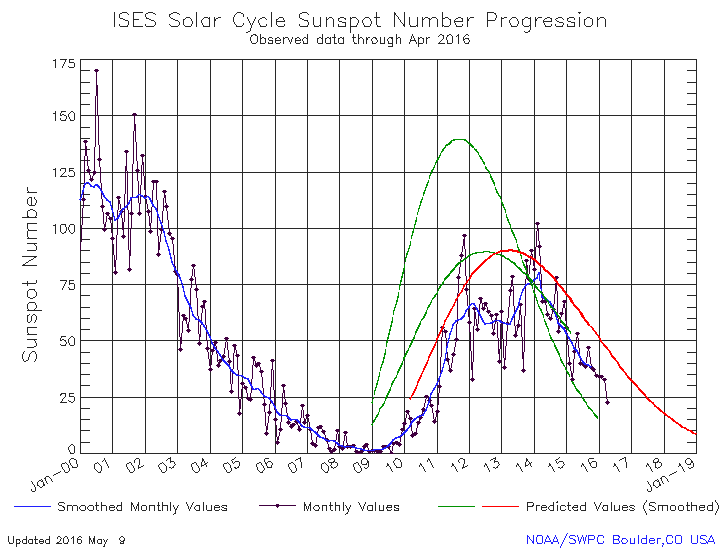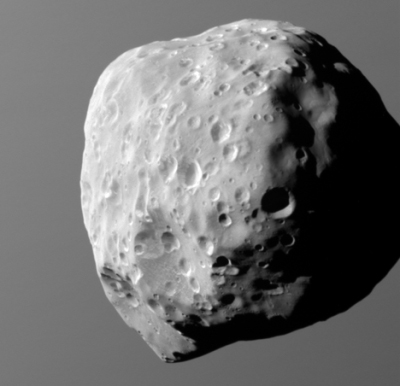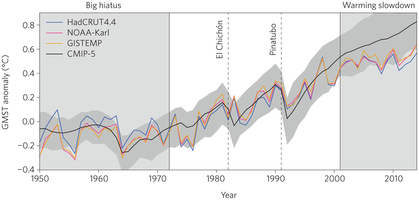No sunspots for the first time in two years
For the first time since July 17, 2014, and only the second time since 2011 at the beginning of the solar maximum, the Sun was blank today, with no sunspots visible on its surface.
I expect the next monthly update of the solar cycle will arrive early next week, and though I expect it will show a slight increase during the past month, it will also show that the ramp down to solar minimum is continuing unabated.
For the first time since July 17, 2014, and only the second time since 2011 at the beginning of the solar maximum, the Sun was blank today, with no sunspots visible on its surface.
I expect the next monthly update of the solar cycle will arrive early next week, and though I expect it will show a slight increase during the past month, it will also show that the ramp down to solar minimum is continuing unabated.





